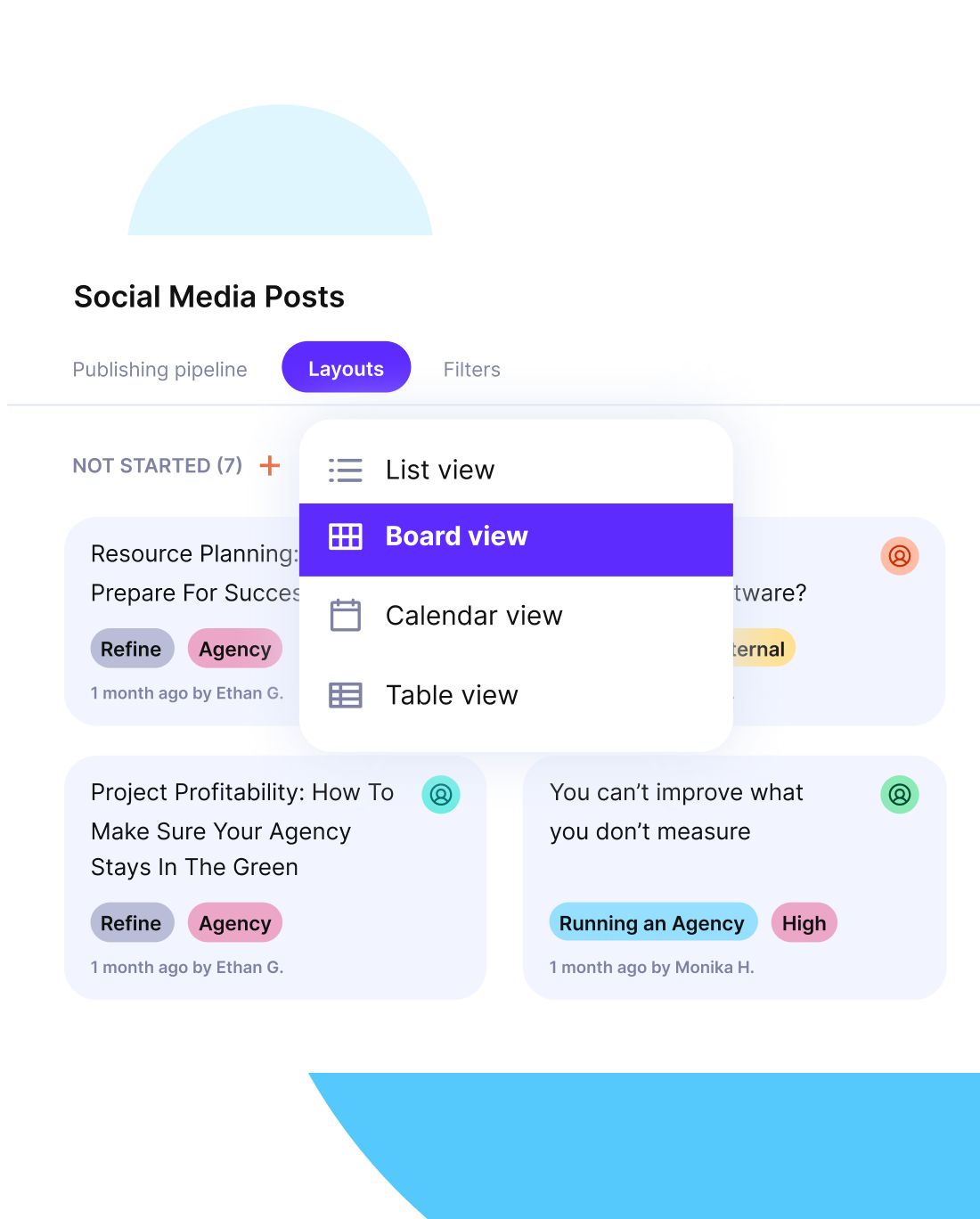What Is Project Communications Management: Steps + Guide
Project communications management is the process of planning, managing, and monitoring how information flows through a project. It ensures the right details reach the right people at the right time, without overload or confusion.
In this guide, we’ll explain what project communications management is, why it matters, and how to apply it. You’ll learn the steps to build a clear communication plan, explore common challenges and fixes, see real-world examples, and get a ready-to-use template.
Key Takeaways
- Project communication management creates a structured flow of information across projects.
- A communication plan sets expectations and prevents confusion between teams and clients.
- Centralized tools simplify reporting and make updates accessible in one place.
- Defined roles and clear communication channels keep accountability visible throughout the project lifecycle.
What Is Project Communications Management?
Project communications management is the structured process of deciding how information will be shared, monitored, and adjusted throughout a project. It covers everything from daily updates to formal reports and client approvals.
In the context of project management, this means building a clear system that keeps clients informed without drowning them in details, while ensuring teams have the context they need to deliver work.
According to the PMBOK® Guide communication management is defined as:
The processes that are required to ensure that the information needs of the project and its stakeholders are met through the development of artifacts and implementation of activities designed to achieve effective information exchange.
SOURCE: PMBOK® Guide (Project Management Body of Knowledge)
Why Is Project Communication Management Important?
Project communication management is important because poor communication is one of the fastest ways projects fall behind. Missed updates can trigger duplicated work, late approvals, and frustrated clients.
Agencies and consultancies lose both time and trust when information is unclear or scattered.
Strong project communications management builds a shared rhythm for how updates are given, which channels to use, and who owns each message. With a defined process, projects avoid project scope creep, teams stay aligned, and client expectations remain clear from start to finish.
What Are the Benefits of Strong Project Communication?
The benefits of strong project communication are clear updates that reduce mistakes, shorter approval cycles, and better client confidence. They are easy to notice in daily work. When everyone knows what to expect, fewer misunderstandings slow a project down.
A defined communication plan gives stakeholders clarity on timing and format of updates. This prevents rework, limits scope creep, and improves the client’s perception of reliability.
Agencies that apply structured communication often report fewer change requests and smoother sign‑offs, which translates into stronger long‑term relationships.
For clients, consistent updates create trust. For teams, it means less time clarifying details and more time delivering results. In both cases, the outcome is higher satisfaction and projects that run closer to plan.
What Are the Main Challenges in Project Communication Management? + How To Solve Them
The main challenges in project communication management are scattered tools, conflicting client expectations, and either too much or too little information shared.
These problems create delays, duplicate work, and strained relationships with stakeholders. The sections below outline three of the most frequent issues and show how teams can fix them in practice.
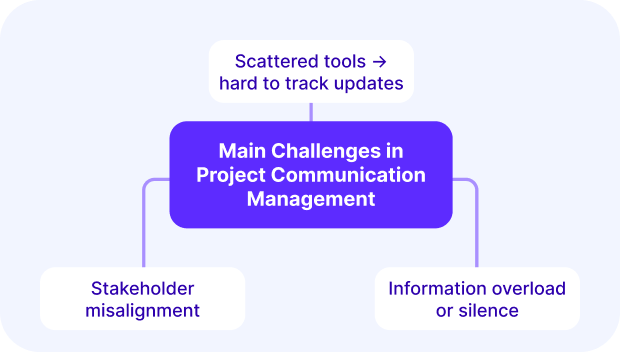
Challenge 1: Scattered tools → hard to track updates
When teams juggle email, chat apps, and spreadsheets, updates become fragmented. Important details get lost, people act on outdated information, and clients receive inconsistent messages.
This confusion makes it difficult to track who said what and when. Without a central source of truth, accountability fades and deadlines slip.
How to solve it:
Consolidate updates in a single platform where project communication, tasks, and reporting live together. This way, everyone sees the same information, and clients know exactly where to look for progress updates.
Tools like Productive help by combining schedules, budgets, and communication in one place, making updates easier to find and share.
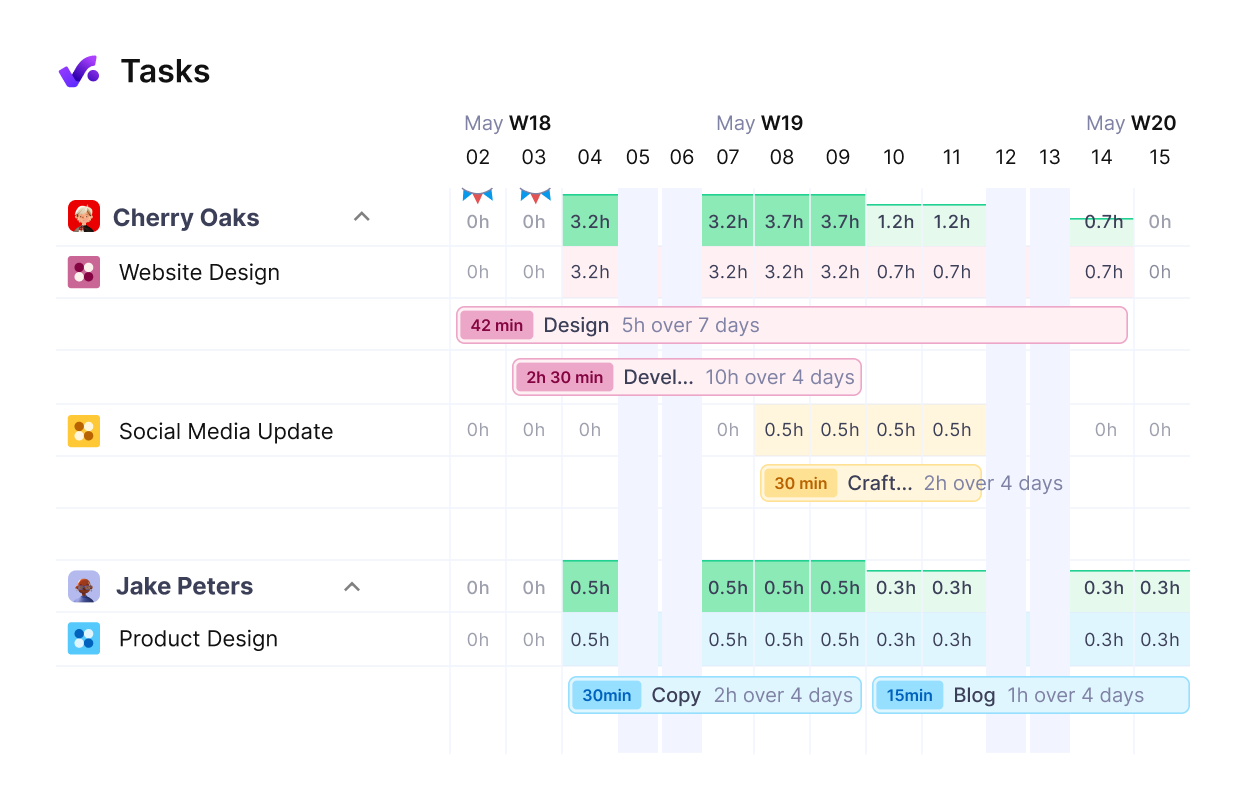
Use Productive to get a real-time view of your team’s workload.
Challenge 2: Stakeholder misalignment
Stakeholder misalignment happens when expectations are unclear and communication requirements are not defined at the start. Clients may assume weekly updates, while teams provide only monthly reports. This gap creates frustration and weakens trust.
Without clear agreements, project stakeholders may pull in different directions, request last‑minute changes, or question decisions already made. The result is scope creep and strained relationships.
How to solve it:
Define communication requirements at kickoff. Document what information each stakeholder needs, how often they want updates, and in what format. Share this plan so everyone has the same expectations.
Using a single platform like Productive makes it easier to keep that plan visible, provide structured stakeholder communication, and avoid surprises. Read our stakeholder engagement strategies guide for more actionable tips.
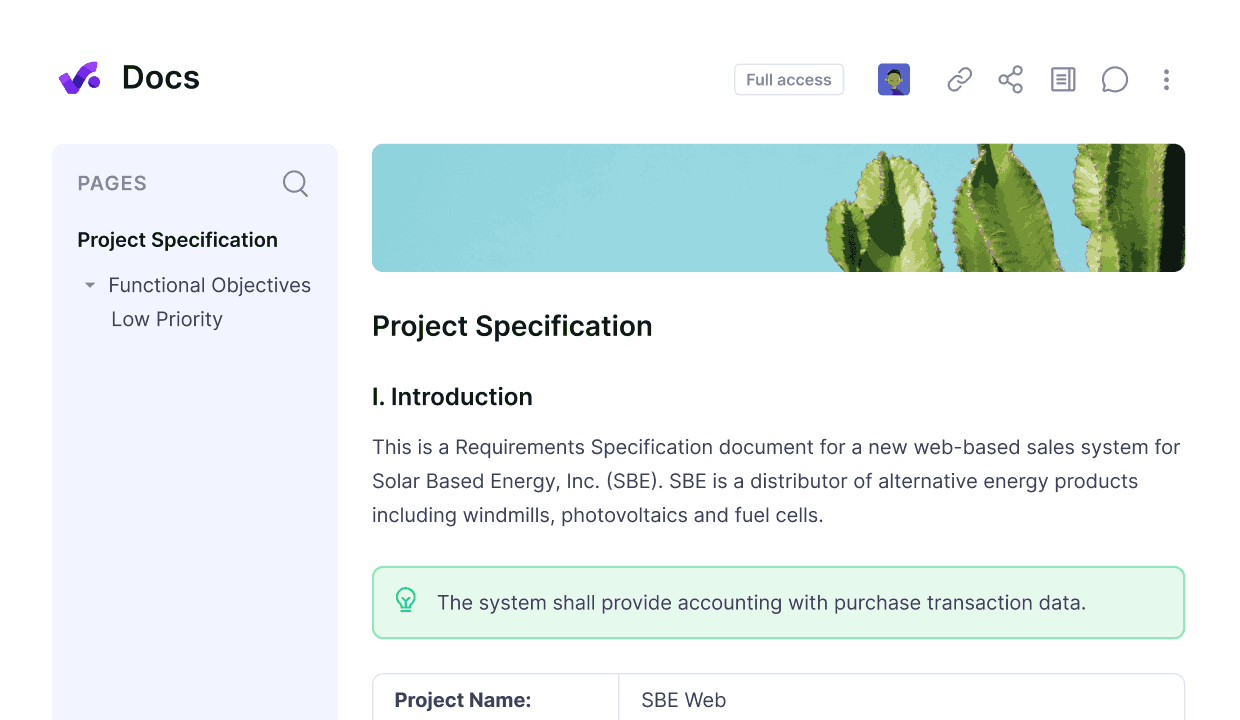
Use a single place to edit, share, and collaborate on all documentation.
Challenge 3: Information overload or silence
Information overload happens when every update is pushed to everyone, burying key details in noise. Silence, on the other hand, creates blind spots that increase risk. Both extremes slow projects down.
Too much detail wastes time, while too little causes missed decisions or late approvals.
How to solve it:
Balance communication by defining what should be shared, how often, and through which channels.
Use dashboards or structured reports to review the most relevant information you need for smart risk management decisions. A platform like Productive makes this easier by giving teams one place to share updates, so everyone has the context they need without being overwhelmed.
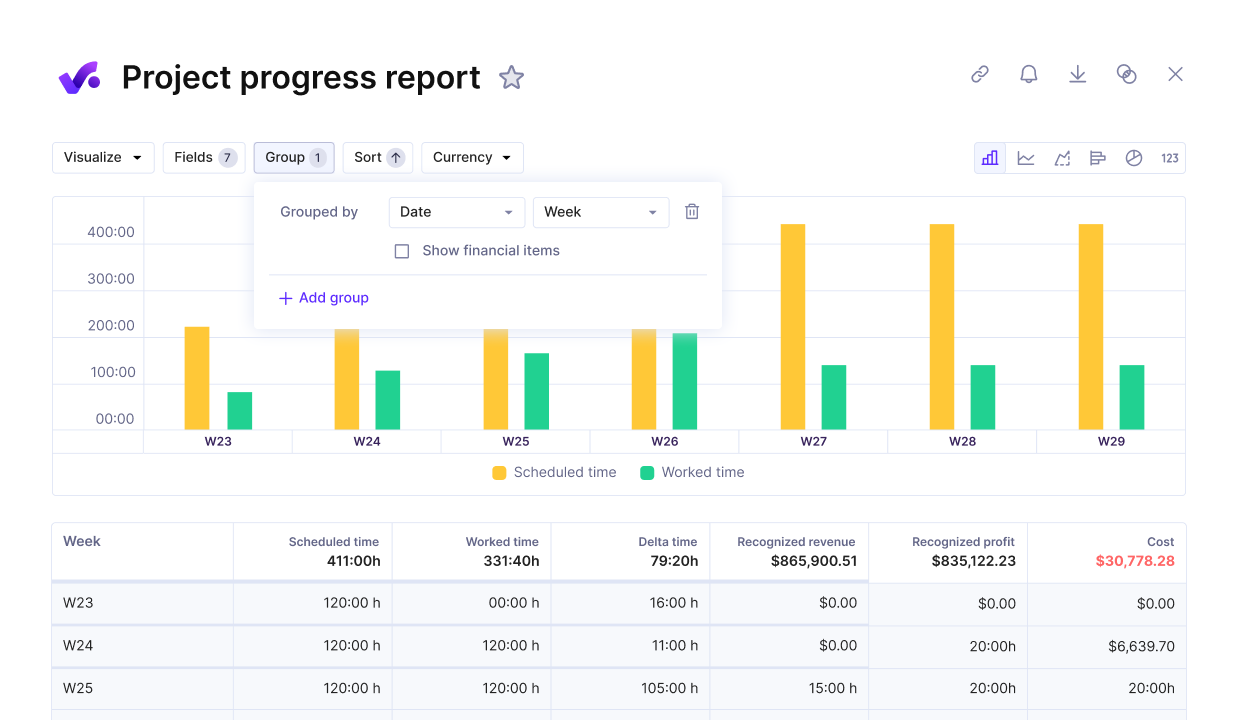
Use Productive’s real-time project progress reports.
Project Communications Management (Step-by-Step Process)
The steps in project communications management are five clear actions that guide how information is shared and monitored. They include defining requirements, creating a plan, choosing tools, executing updates, and reviewing results.
Below is a step‑by‑step process that explains what to do, who should do it, and the outcomes to expect.
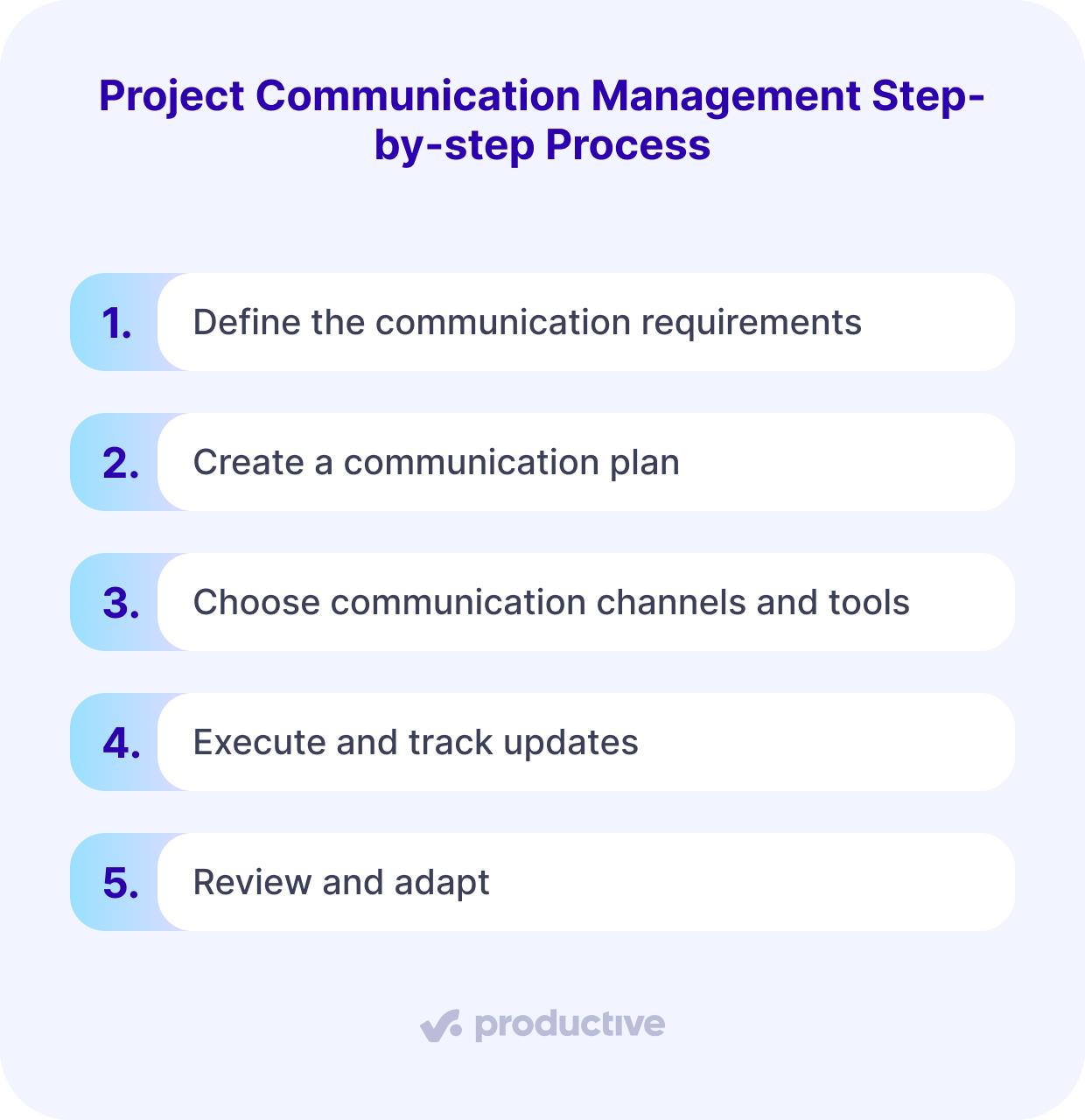
Step 1: Define the communication requirements
Communication requirements mean deciding what information is needed, who needs it, and when it should be delivered.
Project managers usually lead this step, working with stakeholders to list the types of updates that matter, such as timelines, budget status, or risks. The outcome is a clear set of expectations that guides every message sent during the project.
Step 2: Create a communication plan
The communication plan explains how updates will be delivered, who is responsible for them, and the format they will take.
The project manager typically drafts the plan, with input from the team and key stakeholders. It should include details like frequency of reports, meeting schedules, and the channels used for sharing progress.
The outcome is a shared agreement that removes guesswork and ensures everyone follows the same rhythm.
Step 3: Choose communication channels and tools
The third step in project communications management is to choose the channels and tools that will carry each message. Teams need to decide where updates will be shared and how formal they should be.
Project managers guide this choice by comparing options like email, chat apps, or project management software. The goal is to use consistent channels that everyone agrees on. This avoids the risk of updates being lost across multiple apps.
The outcome is a defined set of tools and methods for communication that makes information easy to find and reliable for both the team and the client. Head over to our client communication guide to learn more.
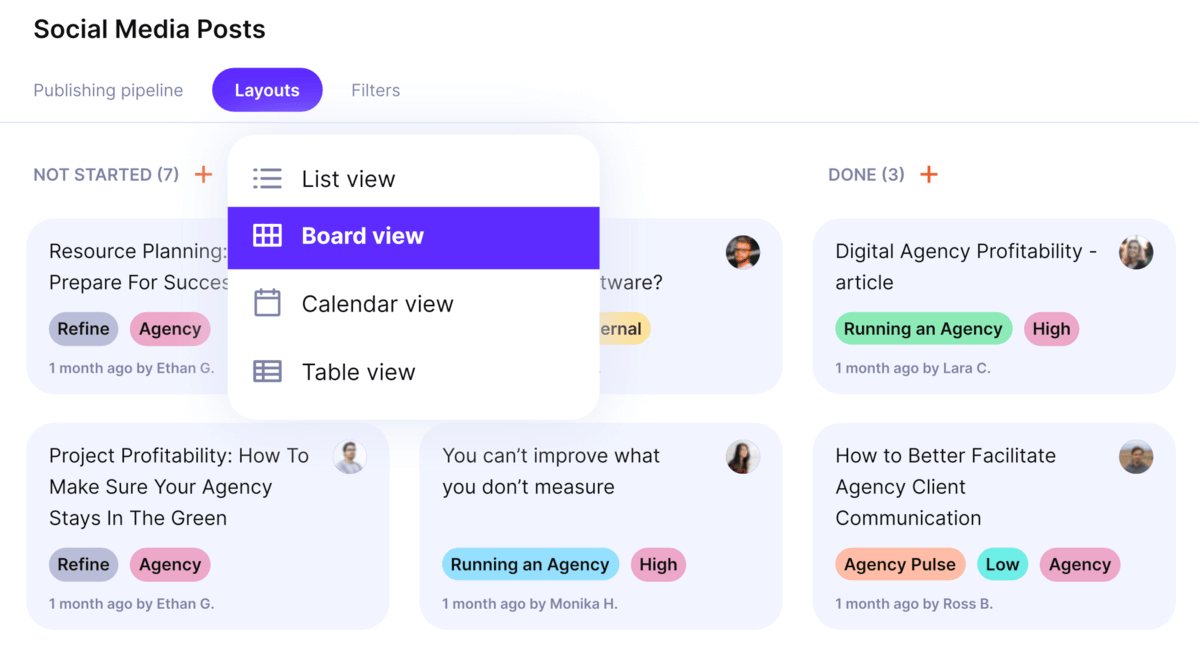
Set up project boards with clear tasks, phases and milestones.
Step 4: Execute and track updates
Put the plan into action and track updates as the project moves forward. This means sharing progress reports, status dashboards, or meeting notes according to the agreed schedule.
Project managers are responsible for ensuring updates are consistent and accessible. Teams contribute by logging progress and flagging issues, while project stakeholders receive information in the format promised.
The outcome is a transparent flow of project updates that keeps everyone aligned and reduces surprises.
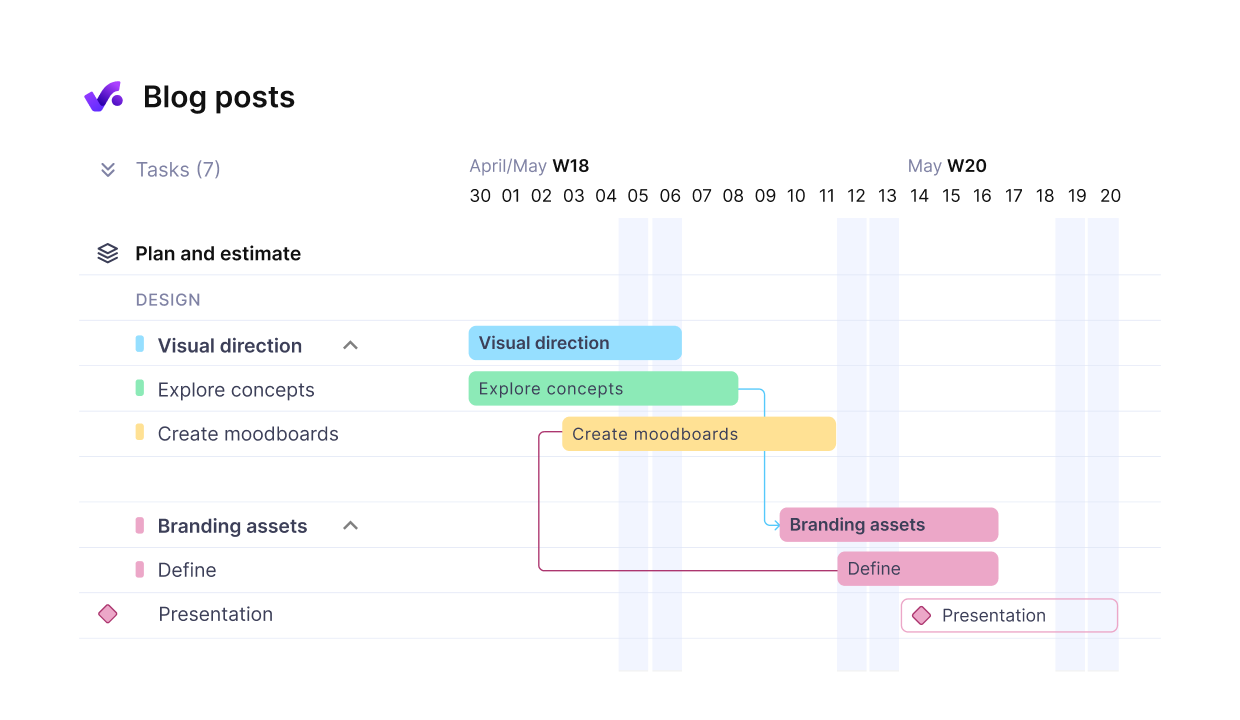
Manage every step of project delivery.
Step 5: Review and adapt
Review and adapt the process. At regular intervals, teams and project managers should assess whether the communication plan is working as intended.
This review involves checking if stakeholders are receiving the right level of detail, if updates are being shared on time, and if the chosen channels are effective. Collect feedback from both clients and team members to understand what can be improved.
The outcome is an adjusted communication strategy that reflects the realities of the project. By adapting based on feedback, projects stay aligned, and communication continues to serve the needs of everyone involved.
Manage project communication with Productive
What Tools Support Project Communications Management?
The tools that support project communications management are those that make updates clear, consistent, and easy to find. Teams often start with free apps like email, chat, or file‑sharing tools, but these quickly multiply and create noise.
Paid communication tools add features such as scheduling and reporting, but they still require juggling multiple platforms.
All‑in‑one project management platforms solve this problem by bringing tasks, updates, and reporting together in one place. With a single tool, teams share progress in real time, and clients know where to look for reliable information.
This reduces confusion and saves time spent chasing updates across channels.
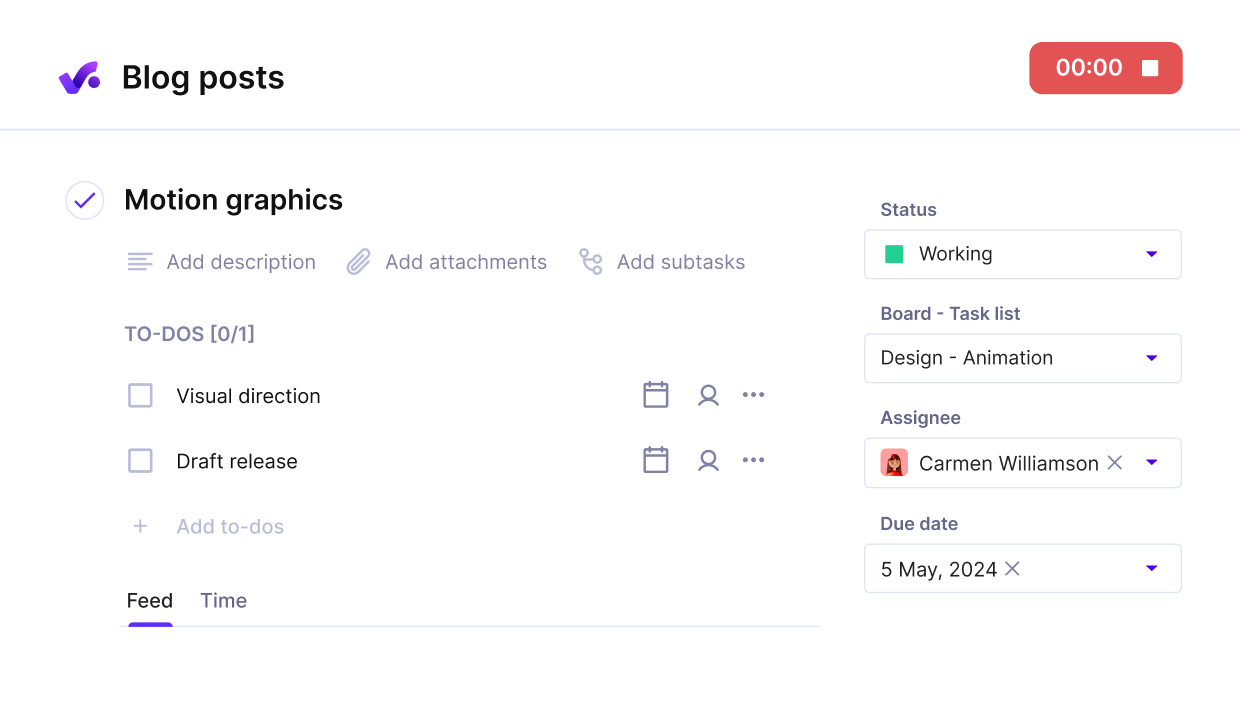
Keep all project-related data tied directly to the tasks with clear descriptions, to-do lists, owners, and dependencies.
The most effective tools not only send messages but also track progress and link communication to project work. This integration keeps context clear and prevents details from slipping through.
Must-have Features
The best communication tools include features that keep information organized and tied to project work:
- Dashboards: give stakeholders a quick view of progress without extra meetings.
- Reporting: shows how the project is tracking against deadlines and budgets.
- Shared timelines: make scheduling updates clear and predictable.
- Client access: ensures stakeholders see the latest status without asking.
- Integration with task management and budgeting: connects communication to the rest of project management, making updates part of the workflow rather than an afterthought.
Platforms like Productive combine these elements so teams can communicate, track progress, and share reports in one place. If you want to save research time, there’s a list of the best project management software with a client portal on our blog.
How Much Do Communication Tools Cost?
Communication tools range from free apps to enterprise platforms.
- Free options like email or chat, or free PM tools work at the start, but create extra effort as projects grow.
- Mid‑tier paid tools cost between $10 and $30 per user each month and add scheduling or reporting features, though they still require switching between platforms.
- All‑in‑one project management platforms are usually priced per user per month, with costs that vary by feature depth.
They reduce the hidden cost of juggling multiple apps and lost updates. For most teams, budgeting $20–$40 per user per month provides access to a tool that combines communication, project management, and reporting in one place.
Example of a Project Communication Plan
Here is a realistic example of a project communication plan for a development agency working on a client website build:
- Stakeholders: Client product owner, internal project manager, lead developer, QA lead, and finance manager.
- Frequency:
Weekly progress retrospective meeting with client (video conferencing call + summary notes).
Daily stand‑up for the internal development team (15 minutes).
Bi‑weekly sprint scope review and demo with client.
Monthly budget and resource report for the client and cost management. - Channels:
Client portal for documentation requirements, implementation guidelines, tickets, and sprint boards.
Slack for internal quick updates and less important written communication.
Shared dashboard for tracking milestones and backlog. - Responsibilities:
Project manager: organizes client meetings, sends weekly summary, manages dashboard updates, and is in charge of client or stakeholder management.
Lead developer: reports technical progress and blockers.
QA lead: shares testing outcomes before sprint reviews.
Finance manager: issues monthly budget status.
Client product owner: confirms priorities and approves scope changes.
Free Project Communication Plan Template
Below is a simple template you can copy and adapt for your own projects. Fill in the table with your specific stakeholders, update frequency, and channels. Adjust the rows to match your stakeholders and the columns to reflect your preferred communication rhythm.
Keep in mind that this template is just a starting point with manual copy-paste and a Google sheet. There’s also the smarter option of booking a demo or getting a free two-week trial of Productive.
| Stakeholder | Information Needed | Frequency | Channel | Responsible Person |
|---|---|---|---|---|
| Client product owner | Progress, milestones | Weekly | Video call + summary | Project Manager |
| Internal team leads | Task status, blockers | Daily stand‑up | Chat / PM dashboard | Team Leads |
| QA lead | Test results, defects | Bi‑weekly | Shared dashboard | QA Lead |
| Finance manager | Budget status | Monthly | Report / Client portal | Finance Manager |
| Project manager | Overall project health | Weekly summary | Dashboard + email | Project Manager |
Final Takeaway
The most important lesson is that communication only works when it is planned, consistent, and reviewed. A simple pilot project is often the best way to test a project communication plan before rolling it out across all engagements.
If scattered tools, missed updates, or unclear client reporting slow your projects, Productive gives you one place to manage everything.
Book a demo to see how it can simplify your communication and keep everyone aligned
Connect communication to delivery with Productive
Share status, decisions, and files where work happens. Use dashboards for progress, risks, and budget. Productive gives your team a single source of truth for clients and stakeholders.
